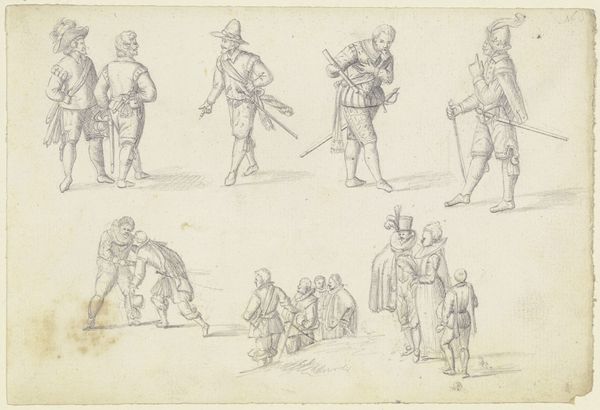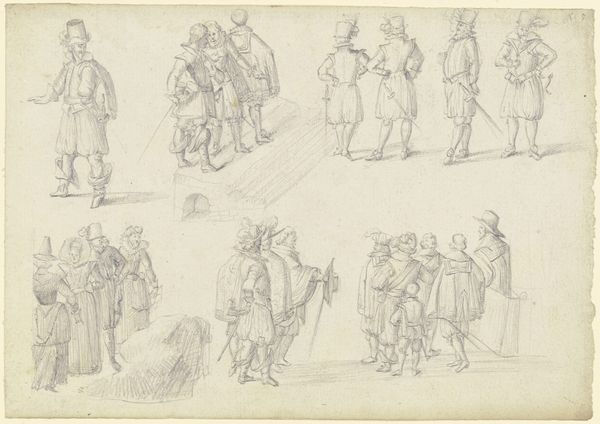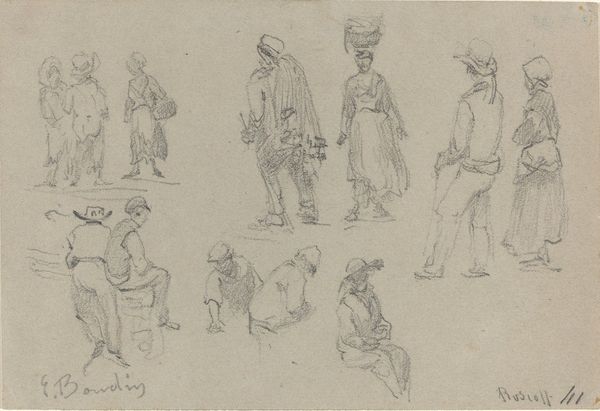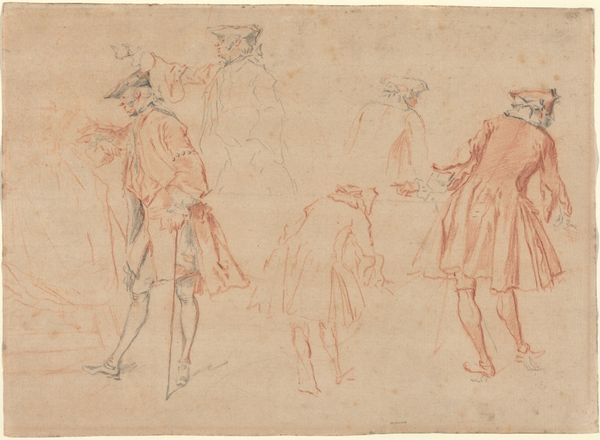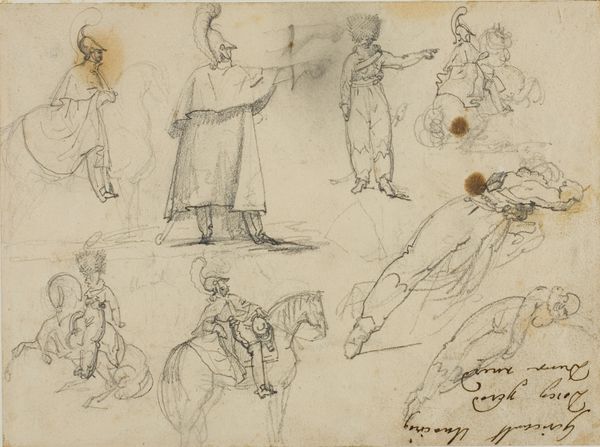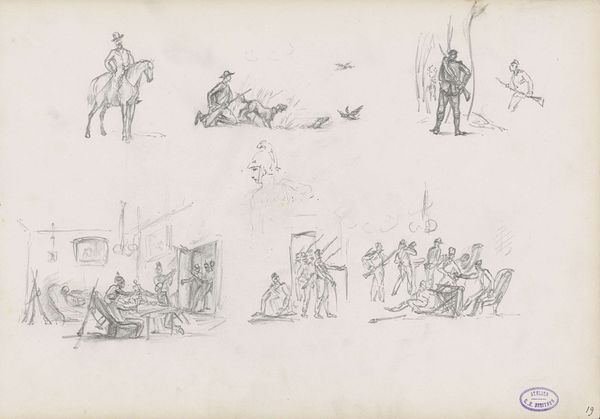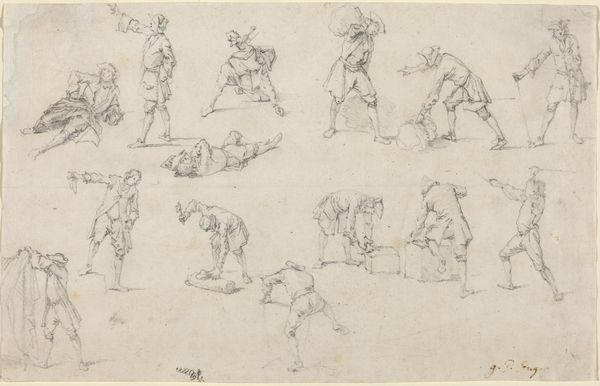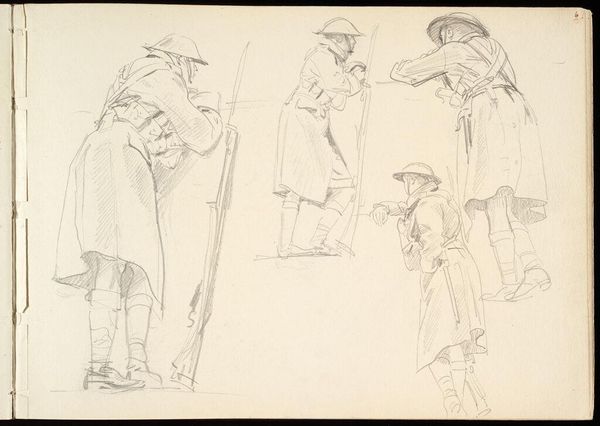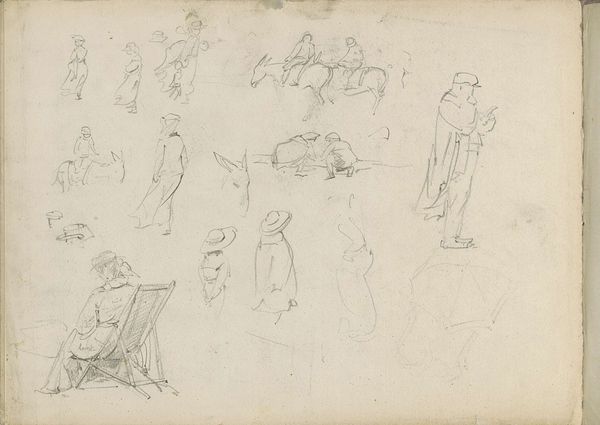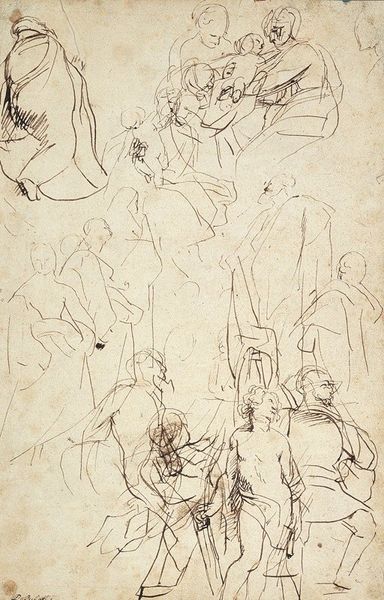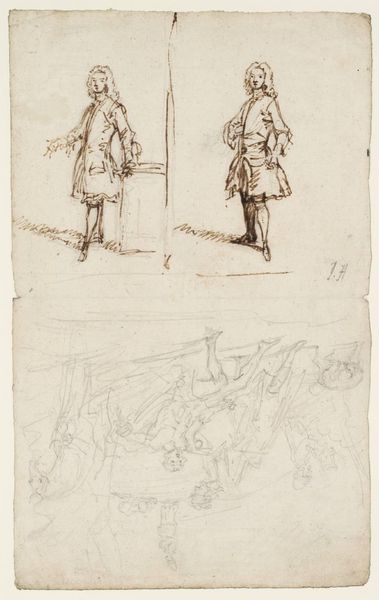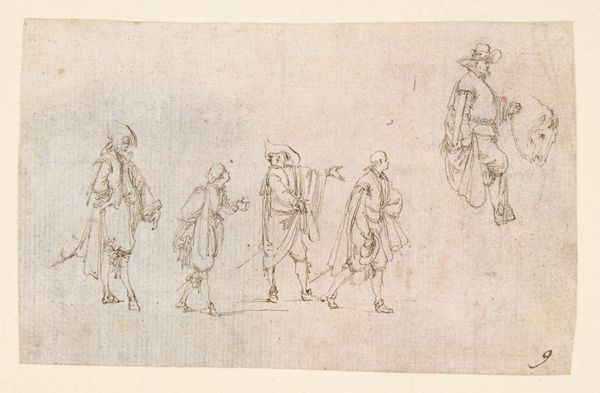
Studies of a Grenadier and a Munitions Cart c. 1818
0:00
0:00
drawing, print, paper, pencil, graphite
#
portrait
#
drawing
# print
#
sketch book
#
paper
#
romanticism
#
pencil
#
graphite
#
history-painting
#
academic-art
Dimensions: 223 × 287 mm
Copyright: Public Domain
Curator: Looking at this sketch from around 1818, titled "Studies of a Grenadier and a Munitions Cart," attributed to Théodore Géricault and residing here at the Art Institute of Chicago. The graphite and pencil on paper create a captivating composition. Editor: The immediate impression is one of dynamic movement—or perhaps a study of possible poses. There's a raw energy here; you can almost hear the drums of war and smell the gunpowder. Curator: Absolutely. It is interesting to see that Gericault focused on the process, evident in the varied linework that suggests revisions. Considering it's on paper, how does the texture impact your read of the work? It’s almost like we're seeing into the artist's workshop, understanding the materiality as key to interpreting the era. Editor: This isn't just a sketch; it's a historical document, isn't it? It invites consideration on the realities and socio-political contexts of the era and speaks volumes about military might during the post-Napoleonic period in France. Do we see propaganda here or mere reflection of military presence? Curator: Propaganda is possible, although I would suggest this functions primarily as preparation. Gericault’s study reminds us about military manufacture—the production, materials and equipment necessary to maintain war, and who ultimately benefited. It subtly directs attention to these largely ignored workers, the "manufacturers" behind the army. Editor: And yet, this approach to depicting the figure breaks from standard neoclassical interpretations in a way, correct? Curator: Yes, and what resonates deeply is the Romantic treatment. One witnesses the rise of the bourgeois who had access to new commodities, art materials included, to then question class constructs through images. What does it tell us about the consumption of warfare at the time? Editor: Well, as a historian, I'm keen on understanding how Géricault's portrayal would influence later generations. He seems aware of art's ability to influence how military and power dynamics were perceived...even understood. Curator: Precisely. To ponder that relationship with the art market, in which some benefit more than others, is a critical discussion. Editor: Thinking about it, it feels both personal and universal, isn’t it? It offers an insightful glimpse into the mechanisms of image-making in relation to the rise and consumption of military life during an unsettled period. Curator: Indeed, a reminder that art is so rarely just about aesthetics; it's about systems.
Comments
No comments
Be the first to comment and join the conversation on the ultimate creative platform.
